Darwin

Nurses in Darwin during WWII

Drinks overlooking Darwin Harbour with Nigel.
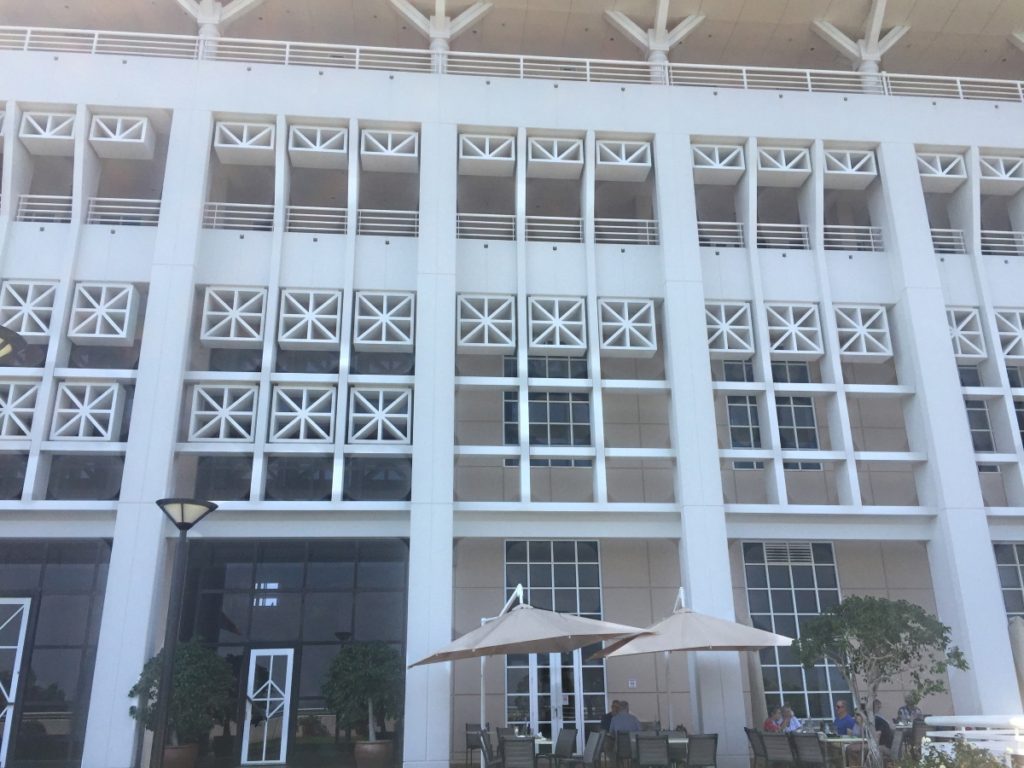
Government House, Darwin. Lovely cafe on ground floor.

Chilli crab, Darwin Harbour.
Kakadu National Park
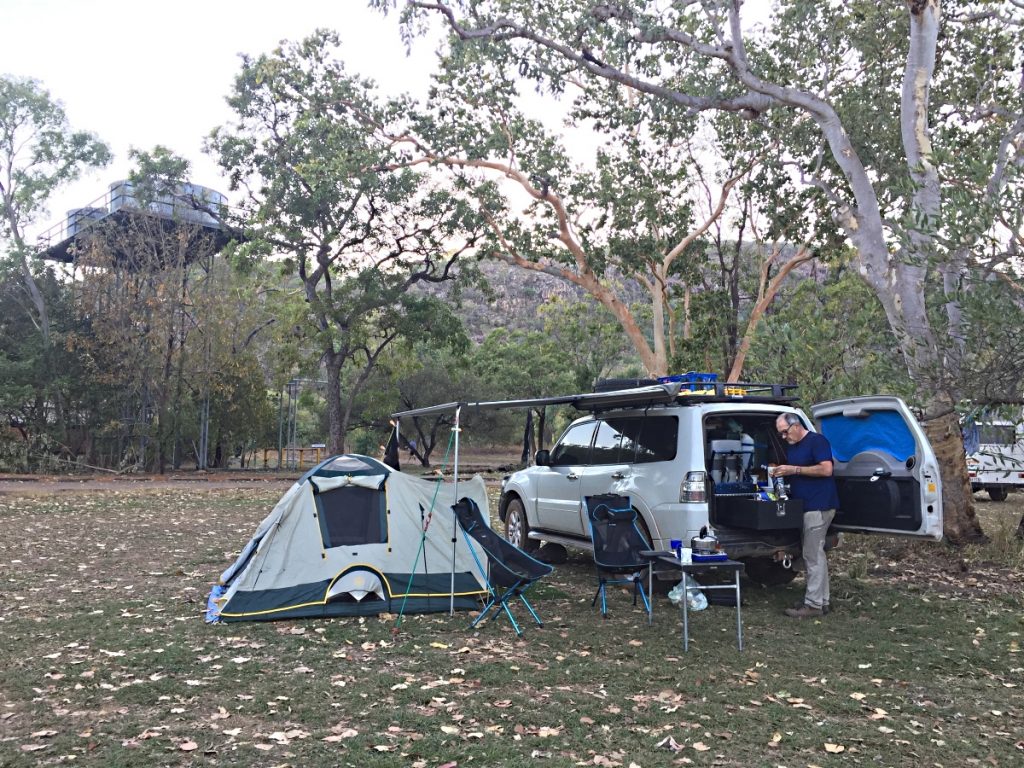
Our campsite at Gunlom. The infinity pool is at the top of the hill in the background. A lovely clear, sandy pool is at the base, off to the left of our campsite.

The track up to Gunlom infinity pool – challenging!

Gunlom infinity pool, still a magnificent pool despite the dry weather. You can see the small waterfall that leaves this pool at the far end.

Gunlom infinity pool and the little waterfall feeding it.

A swim to the waterfall. Note the colour of the water. Gunlom, infinity pool

There’s nothing as good as sitting under a waterfall. Denise at Gunlom infinity pool.

Denise enjoying a dip at the infinity pool, Gunlom
Arnhem Land
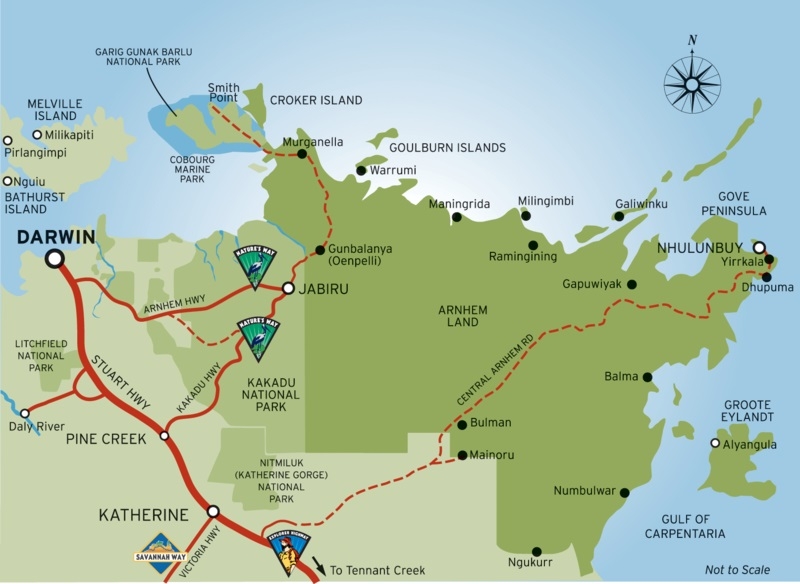
Note the National Park and Smith’s Point shown at the northern part of the map and follow the Central Arnhem Highway to Nhulunbuy in the east, both areas we visited.

Cahill’s Crossing. The crocodiles are further upstream. Apparently as the high tide flows out the crocs sit at the edge of the crossing and pick off the fish as they are swept over the causeway.

A jabiru, fishing at Cahill’s Crossing.

Another water crossing on the way. (Paul and Julie’s car)
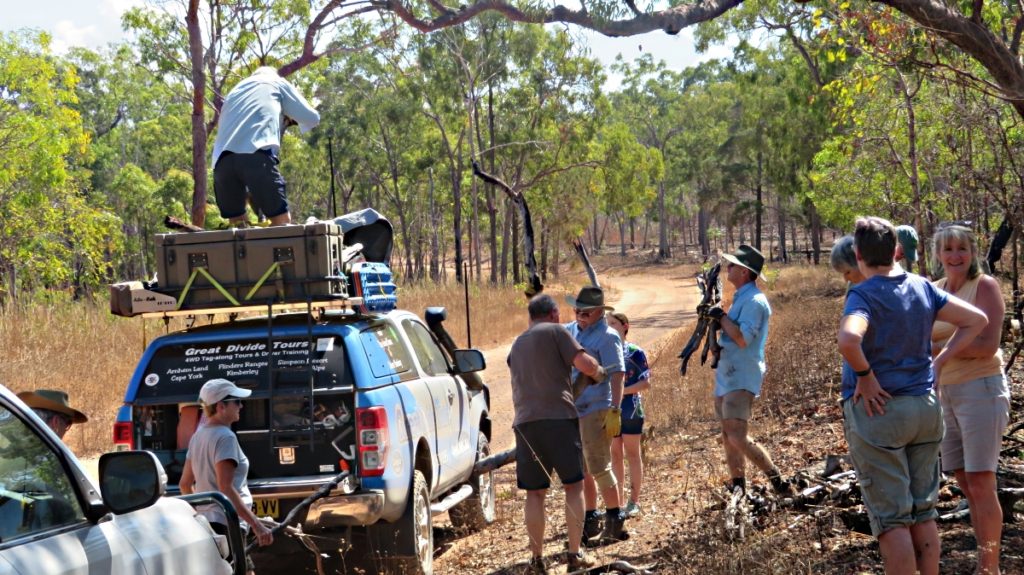
Firewood being loaded onto the top of Neill’s car under the supervision of the women (Jan facing camera, Kathy hands on hips, Ann at back of car). Steve (hat on walking), Paul and Steve getting ready to hand timber up to Neill.
Garig Gunak Barlu NP (Cobourg Peninsula)

The Coburg Peninsula is wholly within this park. The local indigenous people, the Garig, co-manage the park with National Parks. Gunak Barlu refers to land and sea – Native Title rights have been given to them for both the land and the sea.

Pausing by some of the wetlands on the way to Smith Point.
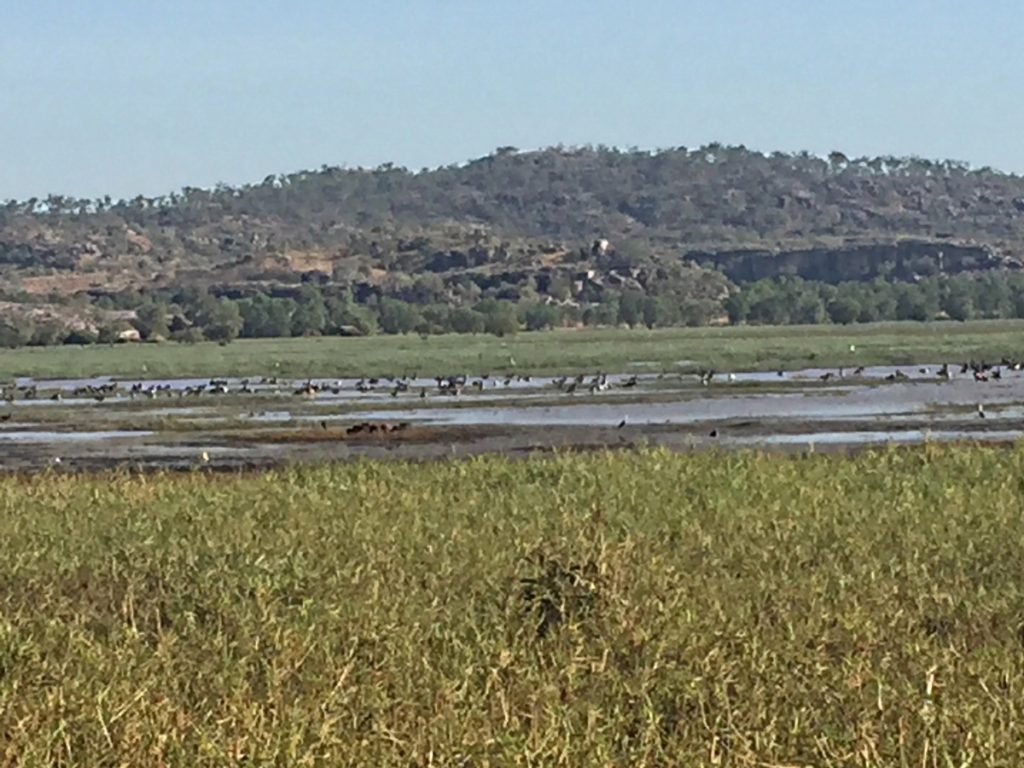
Lots of birds at these wetlands. Garig Gunak Barlu NP

Steve’s ‘catch of the day’ – a jew fish

A Queen Fish – biggest fish I’ve ever caught. I needed help to hold it up.

Travis, our very competent fishing teacher, filleting one of the many fish we caught.
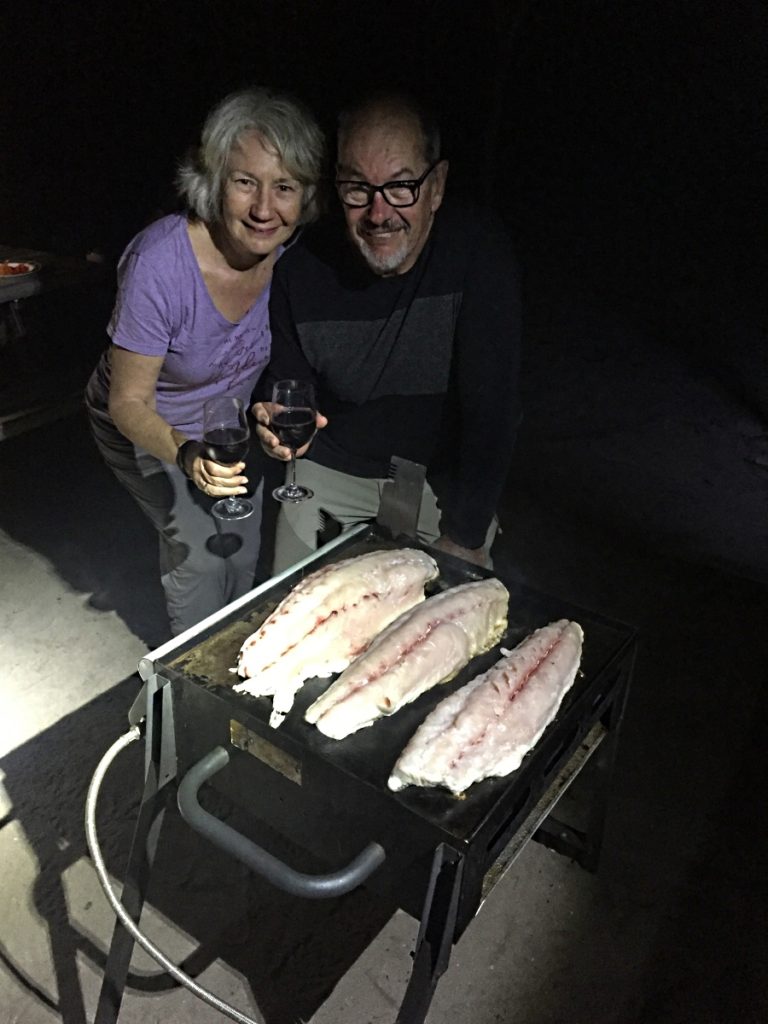
Enjoying the fruits of Denise’s labour – Queenie on the barby.
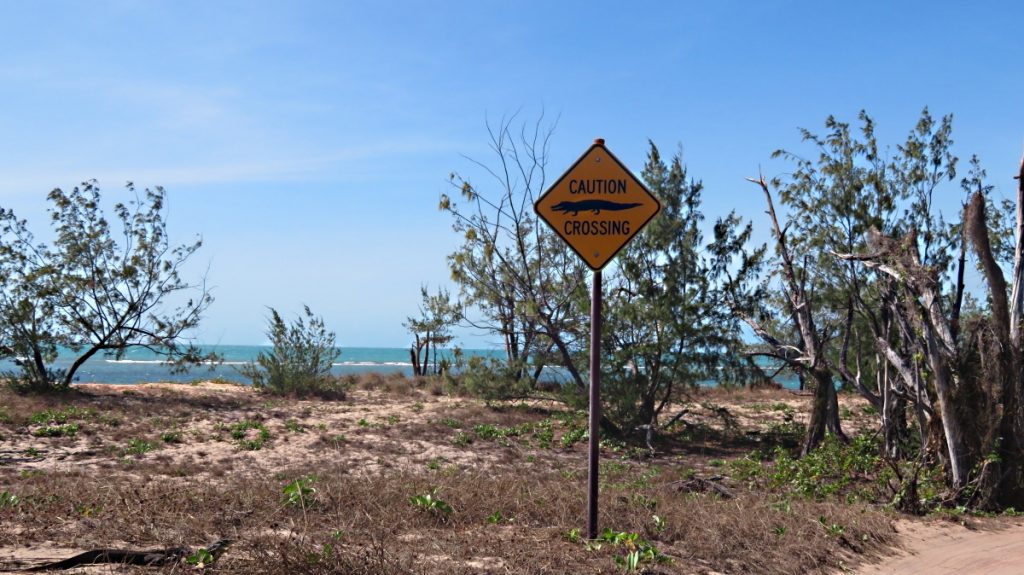
Not a sign you see everyday – and a gentle reminder that, while crocodiles prefer the water, they don’t mind coming ashore.

Striking change seen where the red dirt meets the ocean. Garig Gunak Barlu NP.

Beautiful beaches. Smith Point, Garig Gunuk Barlu NP
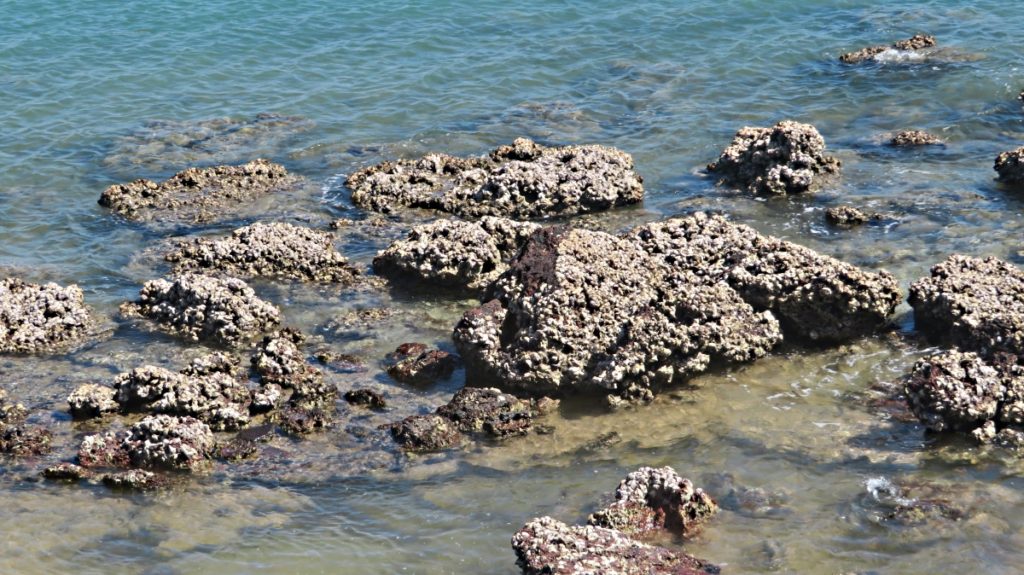
Oysters on the rocks – barely touched as no one wants to mix it with the crocs while oyster gathering.

A monument at the easterly point of the Peninsula.
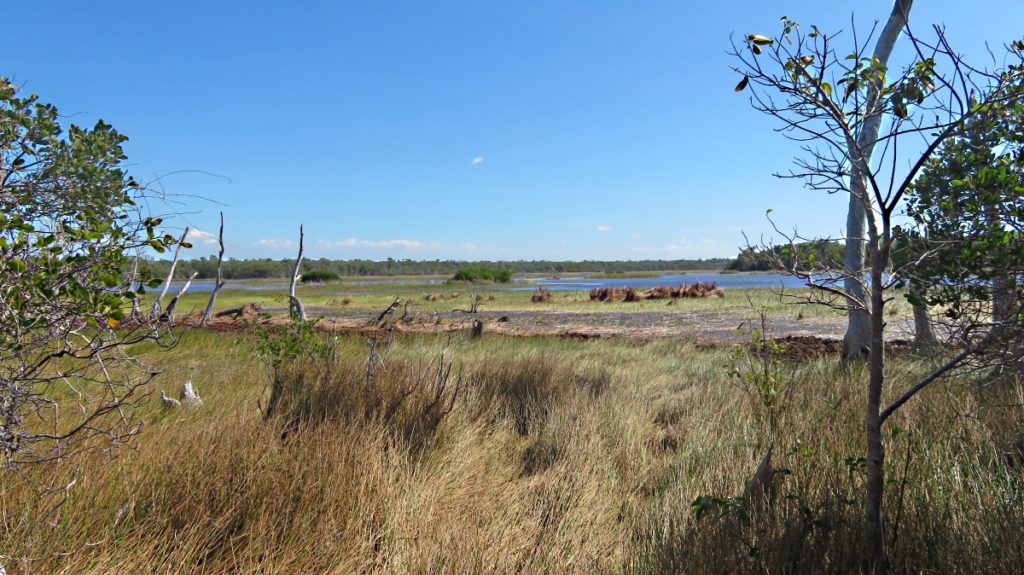
More of the world famous wetlands seen on our drive around the peninsula.

This is Chunky, the crocodile. He owns this beach.

An explanatory sign to guide the walk through Victoria Settlement.
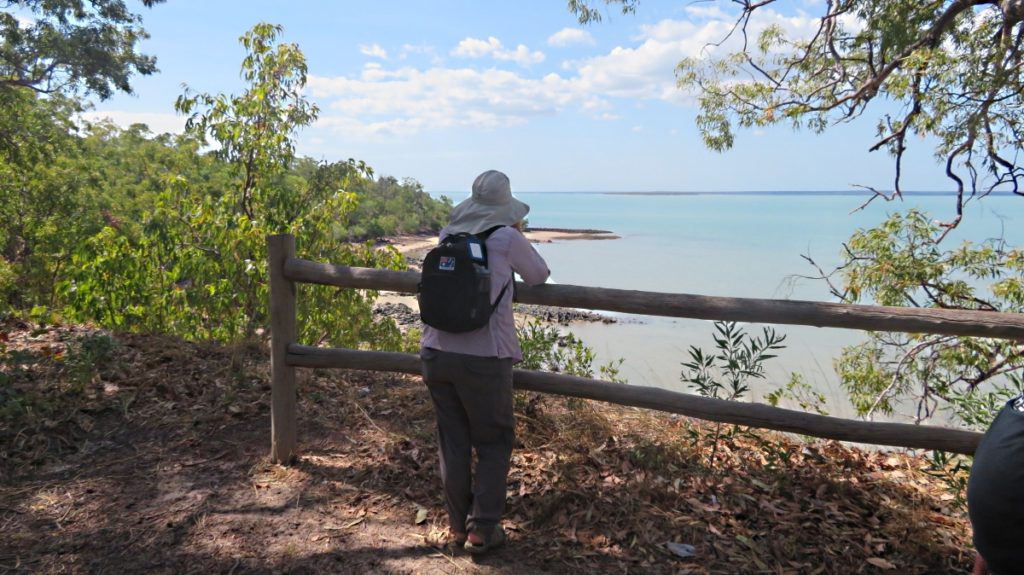
View of Port Essington on which Victoria Settlement was settled.

The armoury at Victoria Settlement. Note how well it was constructed to still be in such good condition. The lighter cementing around a few rocks is the only upkeep that has been perfomed on it.

The chimney stacks and fireplaces for cooking are all that remain of the Officers’ homes. Victoria Settlement

Site and remains of the hospital at Victoria Settlement.

The kiln used to fire the bricks used for some of the buildings. Again, a very well-constructed structure to last virtually untouched through to today.
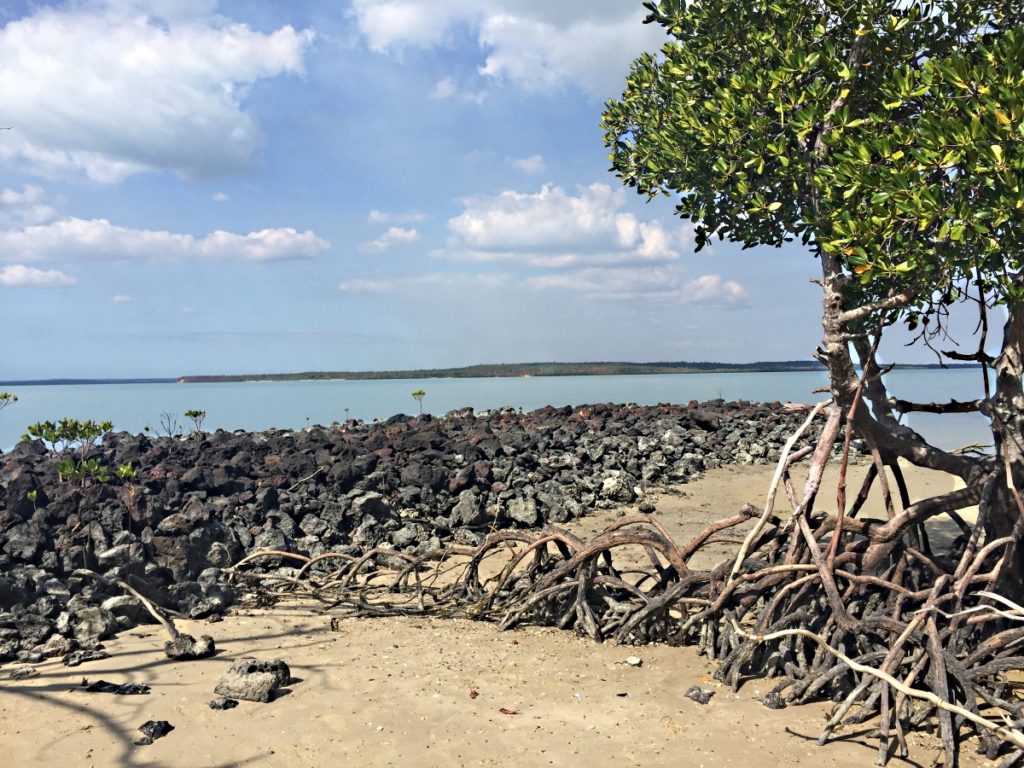
Stone jetty base at Victoria Settlement.

Yep, got the message loud and clear. No chance of us going for a quick dip.

Steve, having fun at our Smith Pt campsite. (Note that while I couldn’t, yet, get him to go without a tent, we were now sleeping without the fly.

Sunset from our Wiligi campsite.

Camped by the beach at Wiligi.
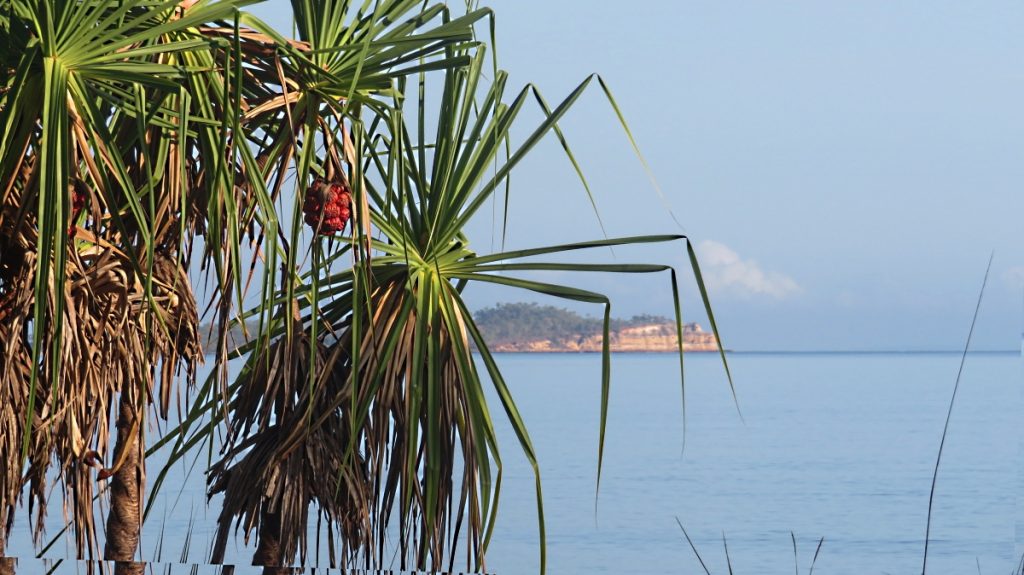
Pandanus Spiralis or ‘screw pine’ at Wiligi. The Indigenous Australians use the strappy leaves for weaving and the fruit (the big orange fruit you can see) has a tasty nut, though it’s hard to access. The base of each leaf is white and apparently tastes a bit like cabbage. The dead trunk can be made into a didgeridoo and as it burns slowly the Indigenous people would use it to carry fire from one place to another. A useful plant.

Waiting for sunset – Wiligi Outstation

Sunset alongside our campsite at Wiligi Outstation.

On my way to Copeland Island, off the shore from Wiligi Outstation.

Copeland Island
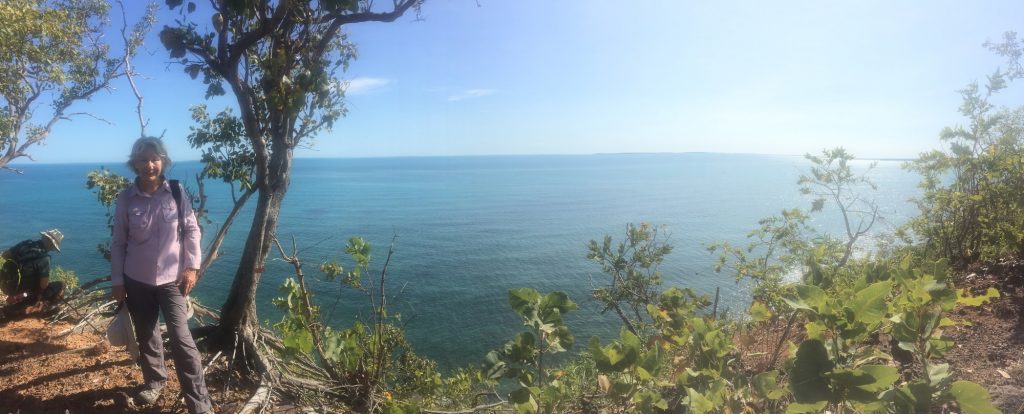
Taken from the highest point on Copeland Is, with Dick to the left of the photo.

Driftwood on Copeland Island.

Our campsite from the boat. Our tent is on the far left, between the two pandanus palms.

On the shore at Wiligi Outstation. The traditional owner lives on the headland behind me.

Magpie geese in the wetlands as we left Coburg Peninsula.
Gunbalanya (Oenpelli)

A local indigenous woman weaving a basket from pandanus leaves. These are coloured using the ocres and fruits and plants of the area. Gunbalanya (Oenpelli)

Weaving a basket from pandanus at the art centre in Gunbalanya (Oenpelli).

Weaving a dilly bag from pandanus leaves.

Painting a traditional message stick. Gunbalanya (Oenpelli)

Lovely landscape as we leave Gunbalanya (Oenpelli)

Beautiful, unusual rock formations around Gunbalanya (Oenpelli)
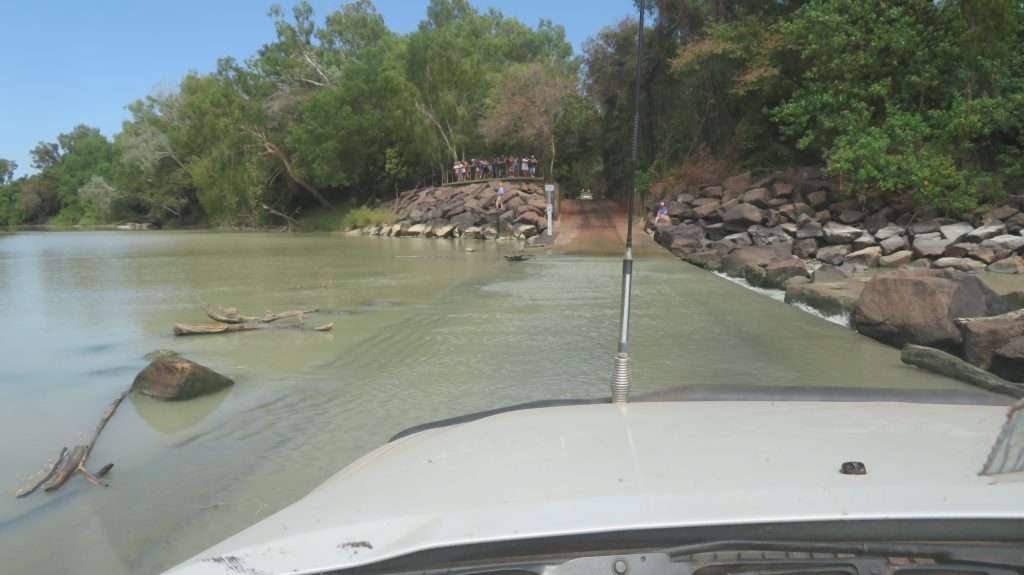
Crossing Cahill’s Crossing as we leave Arnhem Land.

Information board regarding the wild rice carvings. Mt Bundey

In celebration of wild rice at Mt Bundey.

Granite carving of wild rice. Mt Bundey

Viewing the extent of the granite carving of a wild rice sheaf. Mt Bundey

Granite carvings of wild rice at Mt Bundey.